Abstract
Peritoneal exudate cells were induced in mice 4 days after immunization with SRBC. A low dose of SRBC (10(6) i.v.) caused T lymphocytes to appear in inflammatory exudates. These cells, not only transferred DTH reactions, but also functioned as helper T cells in antibody production after transfer to syngeneic nu/nu recipient mice. After a high dose of SRBC (10(9) i.v.), very few helper T cells and no DTH transferring T cells were found in inflammatory exudates, although they were present in the spleen. It is postulated that T cells mediating DTH reactions and helper T cells behave similarly as far as those dose dependency of appearance in inflammatory exudates is concerned. A high dose of sensitizing antigen causes retention of helper and effector T cells in the spleen, in this way favouring antibody formation; low doses of antigen allow them to leave the spleen, thus favouring mediation of DTH reactions in the periphery.
Full text
PDF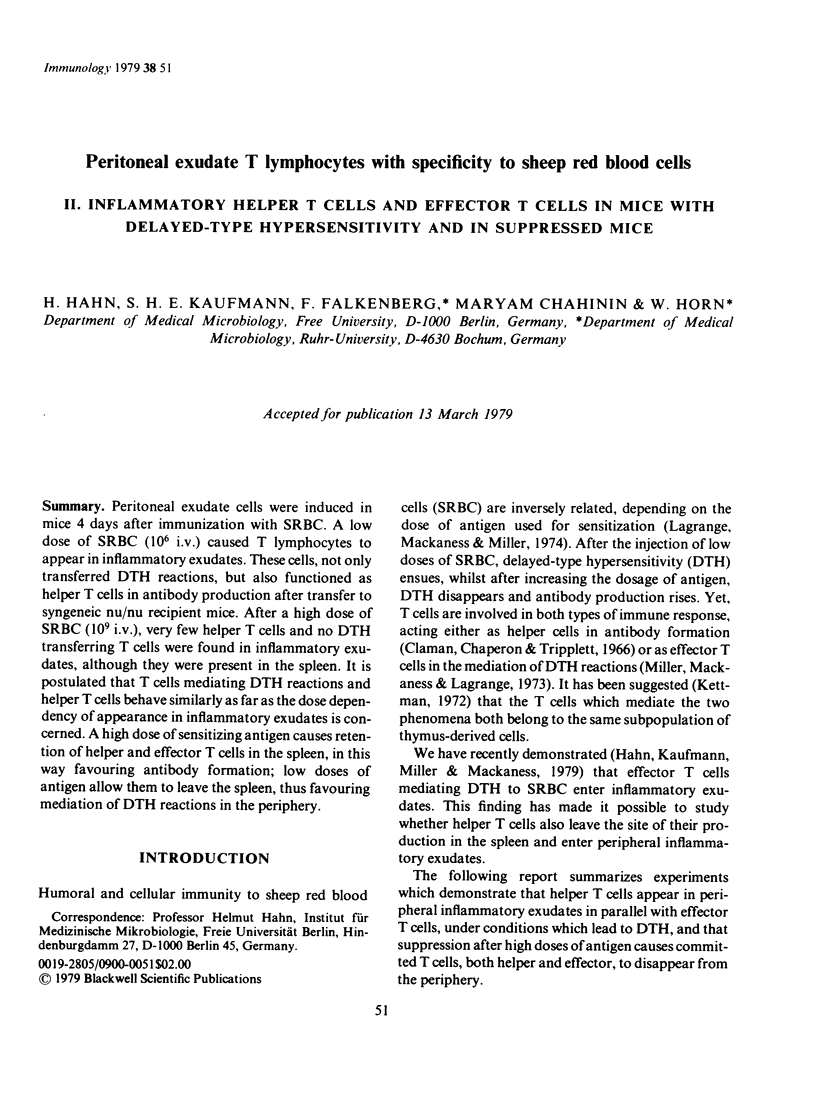
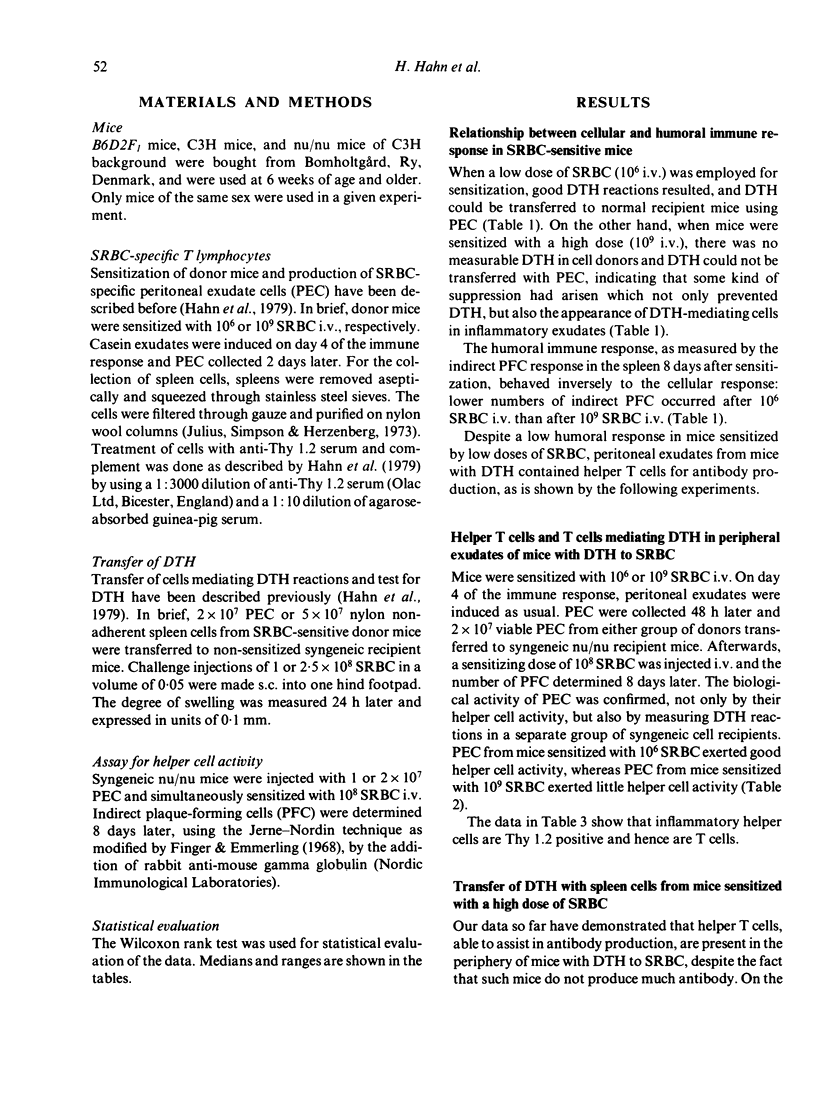
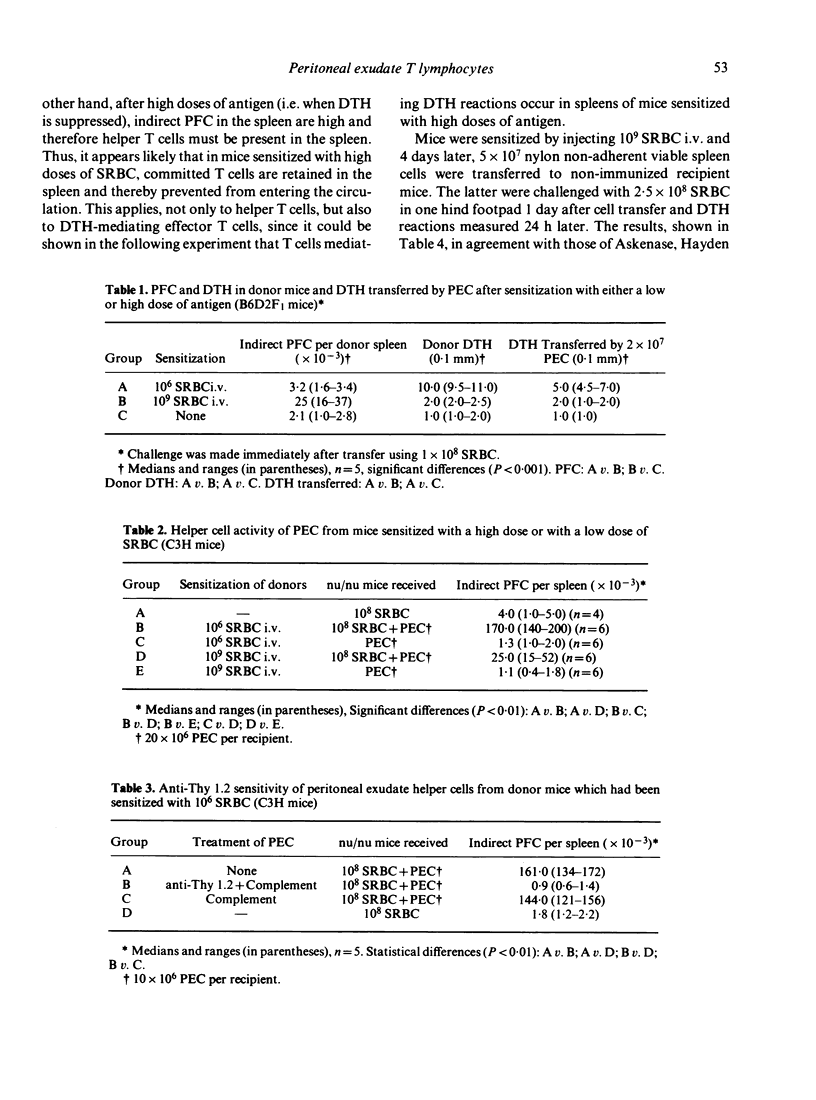
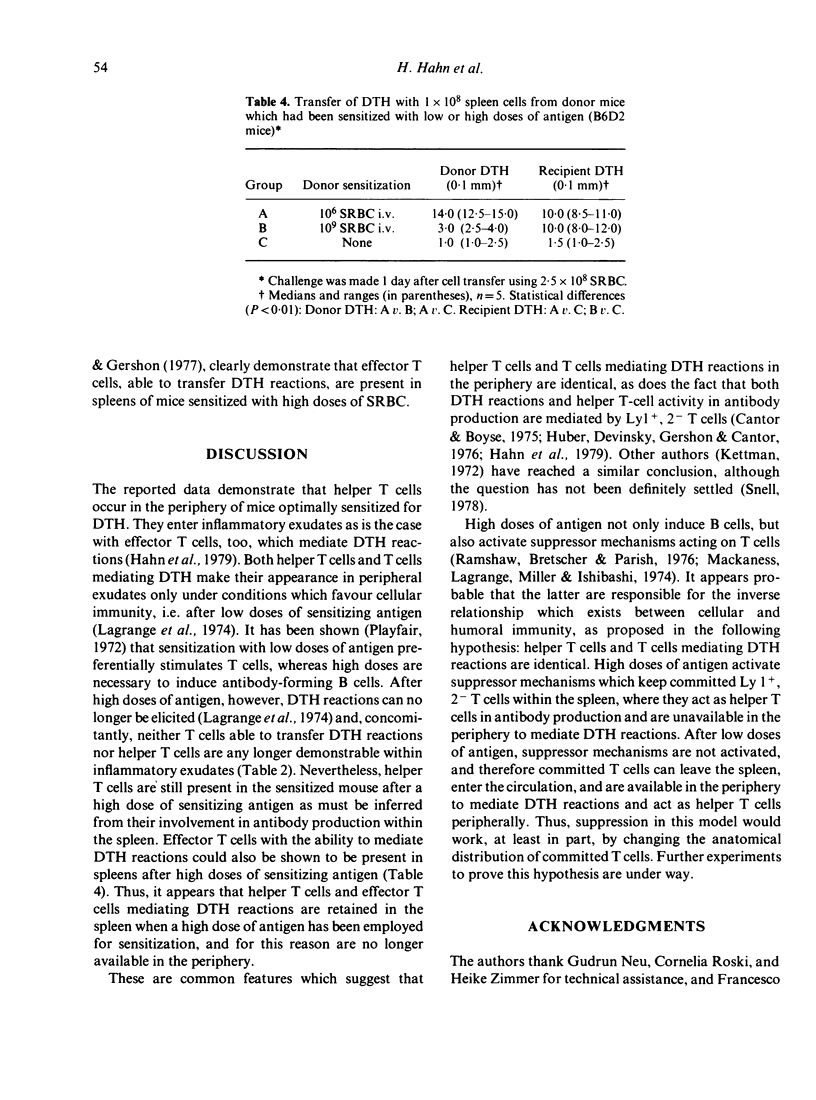
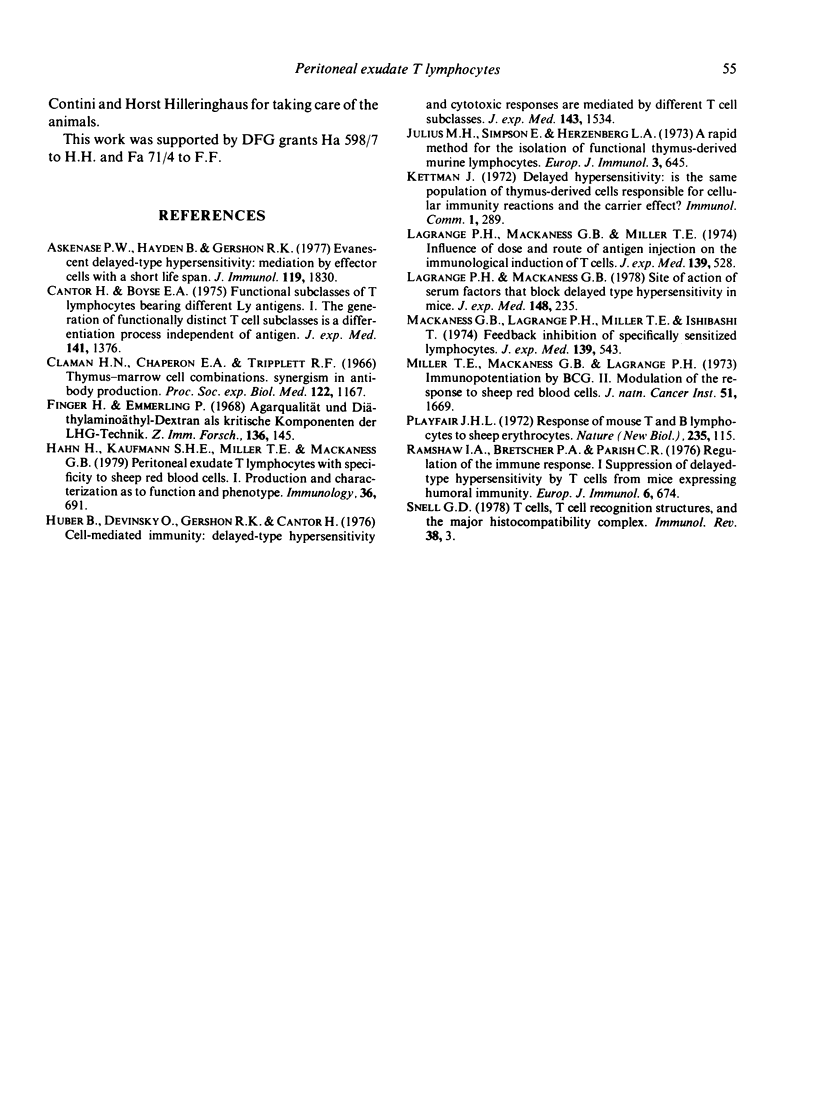
Selected References
These references are in PubMed. This may not be the complete list of references from this article.
- Askenase P. W., Hayden B., Gershon R. K. Evanescent delayed-type hypersensitivity: mediation by effector cells with a short life span. J Immunol. 1977 Nov;119(5):1830–1835. [PubMed] [Google Scholar]
- Cantor H., Boyse E. A. Functional subclasses of T-lymphocytes bearing different Ly antigens. I. The generation of functionally distinct T-cell subclasses is a differentiative process independent of antigen. J Exp Med. 1975 Jun 1;141(6):1376–1389. doi: 10.1084/jem.141.6.1376. [DOI] [PMC free article] [PubMed] [Google Scholar]
- Claman H. N., Chaperon E. A., Triplett R. F. Thymus-marrow cell combinations. Synergism in antibody production. Proc Soc Exp Biol Med. 1966 Aug-Sep;122(4):1167–1171. doi: 10.3181/00379727-122-31353. [DOI] [PubMed] [Google Scholar]
- Finger H., Emmerling P. Agarqualität und Diäthylaminoäthyl-Dextran als kritische Komponenten der LHG-Technik. Z Immunitatsforsch Allerg Klin Immunol. 1968 Aug;136(2):145–157. [PubMed] [Google Scholar]
- Hahn H., Kaufmann S. H., Miller T. E., Mackaness G. B. Peritoneal exudate T lymphocytes with specificity to sheep red blood cells. I. Production and characterization as to function and phenotype. Immunology. 1979 Apr;36(4):691–698. [PMC free article] [PubMed] [Google Scholar]
- Huber B., Devinsky O., Gershon R. K., Cantor H. Cell-mediated immunity: delayed-type hypersensitivity and cytotoxic responses are mediated by different T-cell subclasses. J Exp Med. 1976 Jun 1;143(6):1534–1539. doi: 10.1084/jem.143.6.1534. [DOI] [PMC free article] [PubMed] [Google Scholar]
- Julius M. H., Simpson E., Herzenberg L. A. A rapid method for the isolation of functional thymus-derived murine lymphocytes. Eur J Immunol. 1973 Oct;3(10):645–649. doi: 10.1002/eji.1830031011. [DOI] [PubMed] [Google Scholar]
- Kettman J. Delayed hypersensitivity: is the same population of thymus-derived cells responsible for cellular immunity reactions and the carrier effect? Immunol Commun. 1972;1(3):289–299. doi: 10.3109/08820137209022942. [DOI] [PubMed] [Google Scholar]
- Lagrange P. H., Mackaness G. B., Miller T. E. Influence of dose and route of antigen injection on the immunological induction of T cells. J Exp Med. 1974 Mar 1;139(3):528–542. doi: 10.1084/jem.139.3.528. [DOI] [PMC free article] [PubMed] [Google Scholar]
- Lagrange P. H., Mackaness G. B. Site of action of serum factors that block delayed-type hypersensitivity in mice. J Exp Med. 1978 Jul 1;148(1):235–245. doi: 10.1084/jem.148.1.235. [DOI] [PMC free article] [PubMed] [Google Scholar]
- Mackaness G. B., Lagrange P. H., Miller T. E., Ishibashi T. Feedback inhibition of specifically sensitized lymphocytes. J Exp Med. 1974 Mar 1;139(3):543–559. doi: 10.1084/jem.139.3.543. [DOI] [PMC free article] [PubMed] [Google Scholar]
- Miller T. E., Mackaness G. B., Lagrange P. H. Immunopotentiation with BCG. II. Modulation of the response to sheep red blood cells. J Natl Cancer Inst. 1973 Nov;51(5):1669–1676. doi: 10.1093/jnci/51.5.1669. [DOI] [PubMed] [Google Scholar]
- Ramshaw I. A., Bretscher P. A., Parish C. R. Regulation of the immune response. I. Suppression of delayed-type hypersensitivity by T cells from mice expressing humoral immunity. Eur J Immunol. 1976 Oct;6(10):674–679. doi: 10.1002/eji.1830061003. [DOI] [PubMed] [Google Scholar]
- Snell G. D. T cells, T cells recognition structures, and the major histocompatibility complex. Immunol Rev. 1978;38:3–69. doi: 10.1111/j.1600-065x.1978.tb00384.x. [DOI] [PubMed] [Google Scholar]


